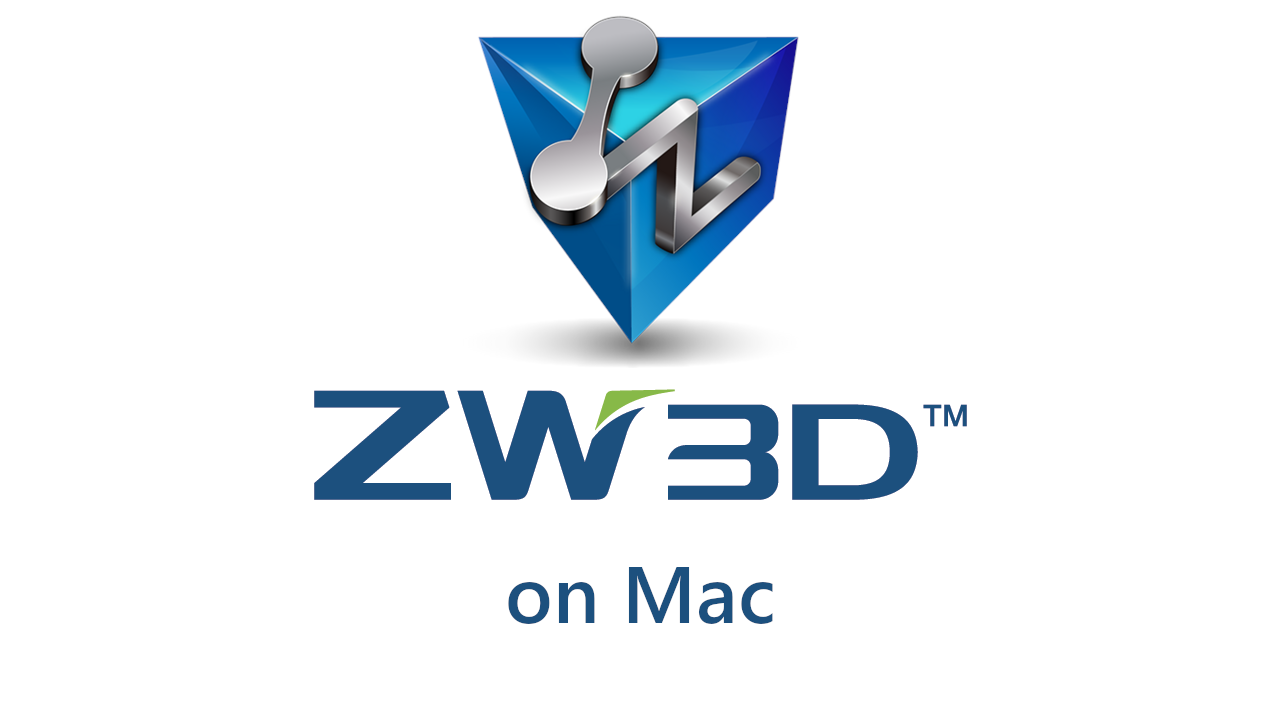What is ZW3D?
ZW3D is a product development software by ZWSoft. It can perform CAD, CAE, and CAM tasks, which means it can be the only program used for the entire cycle of developing a product. The seamless integration between these components results in a simplified workflow, less development costs, and a quicker product development cycle overall. ZW3D can analyze structural strength of your product, analyze and repair improper geometry, automatically generate gears with specified paramaters, simulate CNC machining process, and perform a variety of other specialized tasks. As such, it can be used to design pretty much anything: from relatively simple products like spare parts and plastic molds, to consumer goods, to incredibly complex industrial hardware with thousands of moving parts. Undoubtedly, ZW3D is a very powerful product; however, it is compatible only with Windows computers. Nonetheless, it is possible to run ZW3D on Mac. To accomplish this, you will need an additional third-party tool; learn more about them in the article below.
Why doesn’t ZW3D run on Mac?
There are several reasons why some apps don’t run on Mac. It could be an incompatibility with Mac hardware or macOS version. For example, macOS Catalina and newer don’t support 32-bit apps. Most developers are designing new 64-bit versions of the apps, but there are still hundreds of apps that didn’t receive an update. In our case, however, the problem is quite different: ZW3D native Macintosh version simply doesn’t exist. At the present moment, there is no indication that ZW3D will ever be available for Mac.
How to run ZW3D on Mac
The most popular solution for running ZW3D on Mac/MacBook is virtualization software. Despite the fact that emulators usually demand quite a lot of computing power out of a Mac, some of them, for example, Parallels, VirtualBox, or VMWare, can be used to run different programs on OS X with minimal losses in performance. Moreover, some of them are compatible with DirectX 11, which can help with running graphically demanding apps and games. They also allow you to copy any files between your Windows installation and OS X freely.
Run ZW3D on Mac using Parallels

Parallels Desktop is easily the best virtualization program available on Mac; as such, it is the best way to run ZW3D on Mac. It allows you to install Windows 10 on Mac with just a couple of clicks and switch between OS X and Windows instantly. So you will be able to run Windows and install ZW3D just like on a regular PC.
Run ZW3D on Mac using other virtual machines
Another popular virtualization program is VMware Fusion. It, too, allows running virtual machines with operating systems such as Windows, Linux, FreeBSD, and Solaris. It supports DirectX 11 and OpenGL 4.1 hardware acceleration, which allows the virtual machines to run heavy, GPU-intensive applications and games with top 3D graphics.
You can also try VirtualBox, Wine, and QEMU, however, these solutions are not user-oriented and may require advanced computer skills.
Run ZW3D on a remote server
If you have a powerful Windows-based server and a fast internet connection, you may be able to run ZW3D on that server machine and stream its screen to your Mac.
You can use TeamViewer, AnyDesk, or other software for this purpose.
Run ZW3D on Windows 10 using Boot Camp
Note: Mac M1/M2 chipsets are not supported by BootCamp
BootCamp allows users to choose which operating system to launch at startup, however, you won’t be able to switch between them like when using Parallels. You will need to reboot your machine every time you want to switch from Mac to Windows and vice versa. Do note that you will need no less than 64 GB of free space on your device (we recommend having 128 GB).
To set up Windows via BootCamp, please, do the following:
Important: for MacOS versions prior to OS X El Capitan 10.11 you will need to create bootable Windows USB.
- Download Windows ISO file
- Open Boot Camp Assistant (Go to Applications > Utilities)
- Define the Windows partition size choose downloaded Windows ISO file
- Format Windows partition and go through all Windows installation steps
- When Windows boots for the first time follow on-screen instructions to install Boot Camp and Windows support software (drivers)






